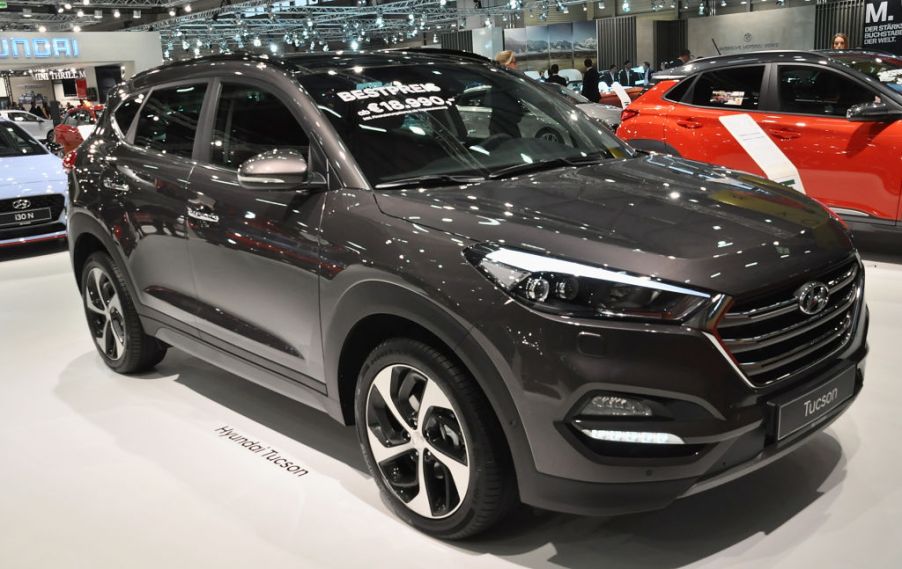
Hyundai Tucson Owners Complain About These Problems the Most
The Hyundai Tucson arrived for the 2005 model year, providing a compact SUV option with two rows of seating for five people. The design was then updated for model years 2010 and 2016. Not every model year of the Tucson has provided exactly what buyers want, though. Here’s a look at the Hyundai Tucson and its three worst problems.
Complaints about the Hyundai Tucson
CarComplaints.com is one online source for owner-submitted problems that people have had with their vehicles. Of Hyundai’s models, the Tucson has the fourth-most submitted complaints, with 586 to date, sitting behind the Sonata, Elantra, and Santa Fe.
Car Complaints found that 2016 is the worst model year for the Hyundai Tucson. This first year of the third generation currently has 214 submitted complaints. The most common problem for the 2016 Tucson is that it has no acceleration from a stopped position. The biggest problem category overall for the Hyundai Tucson is transmission problems.
The Hyundai Tucson had trouble accelerating from a complete stop
The worst issue with the Hyundai Tucson, submitted by 49 owners of the 2016 model year, is that some drivers weren’t able to accelerate after coming to a stop. The SUV has a dual-clutch seven-speed transmission, but the problem is with the application logic of the transmission clutch.
When drivers press the gas pedal more than once, the SUV stops moving. After first issuing a technical service bulletin, in September 2016, Hyundai did issue a recall to have the transmission control module software reprogrammed.
Owners gave this problem an 8.9 severity rating, or “pretty bad.” It typically cost about $1,200 to fix the problem, which appeared on average around 9,550 miles. Car Complaints thought so poorly of this model year that it was given the “Beware of the Clunker” seal.
Engine failure (2012)
There were 17 owners of the 2012 Tucson who experienced engine failure, and 16 of the failures were severe enough to require that the engine be replaced. Several suggested it was the bearings that had failed, and they heard a knocking sound before the engine failure happened.
Owners gave this issue a 9.5 severity rating, or “really awful.” On average, it occurred at around 98,000 miles and cost them $4,500 to have the engine replaced.
Engine failure (2013)
The engine failure problems continued for the 2013 Hyundai Tucson. Owners described the engine seizing and then shutting down. Submitted by nine owners, the engine failure was serious enough that seven of the engines were replaced. One owner solved the problem by selling the car.
The engine problems were rated at a 9.3 in severity, or “really awful.” The average cost to repair the engine issue was $4,150, and problems appeared around 87,900 miles.
Other Hyundai Tucson model years
The engine concerns continued for model years 2014 and 2015 before being replaced by the transmission problems found in the 2016 Tucson. Those transmission problems continued into 2017 and, to a lesser degree, in 2018.
While 2008 and 2009 weren’t rated, the Tucson received a one out of five for owner satisfaction from 2005 to 2007 and from 2010 to 2017. The 2016 and 2017 model years were given a one out of five for their reliability verdict as well. The good news is that, so far, the 2019 and 2020 model years have very few submitted complaints as well as higher ratings.


